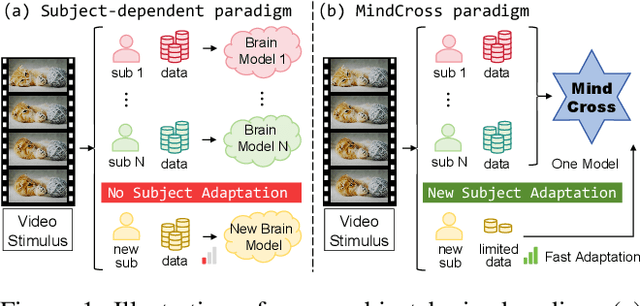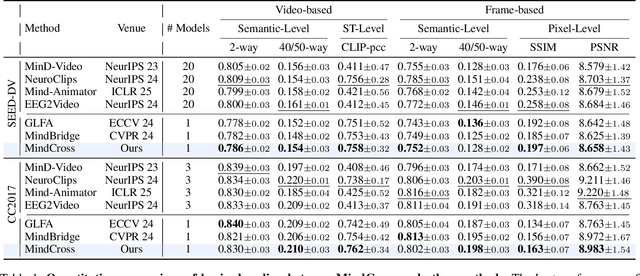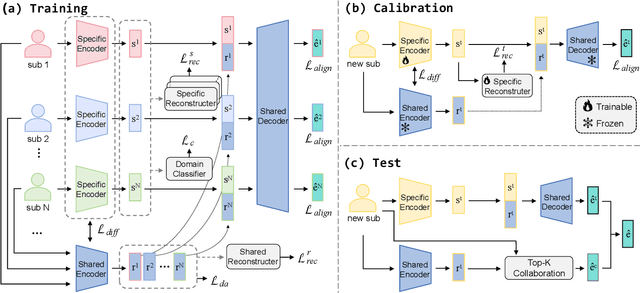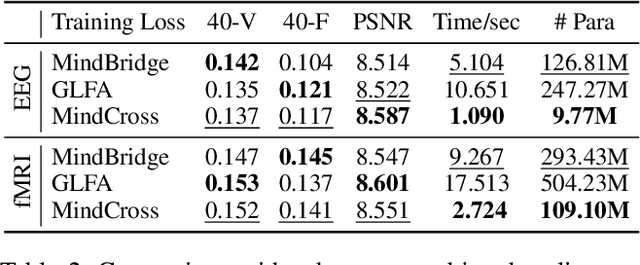Tianyi Zhou
Schoenfeld's Anatomy of Mathematical Reasoning by Language Models
Dec 23, 2025Abstract:Large language models increasingly expose reasoning traces, yet their underlying cognitive structure and steps remain difficult to identify and analyze beyond surface-level statistics. We adopt Schoenfeld's Episode Theory as an inductive, intermediate-scale lens and introduce ThinkARM (Anatomy of Reasoning in Models), a scalable framework that explicitly abstracts reasoning traces into functional reasoning steps such as Analysis, Explore, Implement, Verify, etc. When applied to mathematical problem solving by diverse models, this abstraction reveals reproducible thinking dynamics and structural differences between reasoning and non-reasoning models, which are not apparent from token-level views. We further present two diagnostic case studies showing that exploration functions as a critical branching step associated with correctness, and that efficiency-oriented methods selectively suppress evaluative feedback steps rather than uniformly shortening responses. Together, our results demonstrate that episode-level representations make reasoning steps explicit, enabling systematic analysis of how reasoning is structured, stabilized, and altered in modern language models.
Can LLMs Estimate Student Struggles? Human-AI Difficulty Alignment with Proficiency Simulation for Item Difficulty Prediction
Dec 21, 2025Abstract:Accurate estimation of item (question or task) difficulty is critical for educational assessment but suffers from the cold start problem. While Large Language Models demonstrate superhuman problem-solving capabilities, it remains an open question whether they can perceive the cognitive struggles of human learners. In this work, we present a large-scale empirical analysis of Human-AI Difficulty Alignment for over 20 models across diverse domains such as medical knowledge and mathematical reasoning. Our findings reveal a systematic misalignment where scaling up model size is not reliably helpful; instead of aligning with humans, models converge toward a shared machine consensus. We observe that high performance often impedes accurate difficulty estimation, as models struggle to simulate the capability limitations of students even when being explicitly prompted to adopt specific proficiency levels. Furthermore, we identify a critical lack of introspection, as models fail to predict their own limitations. These results suggest that general problem-solving capability does not imply an understanding of human cognitive struggles, highlighting the challenge of using current models for automated difficulty prediction.
V-REX: Benchmarking Exploratory Visual Reasoning via Chain-of-Questions
Dec 12, 2025Abstract:While many vision-language models (VLMs) are developed to answer well-defined, straightforward questions with highly specified targets, as in most benchmarks, they often struggle in practice with complex open-ended tasks, which usually require multiple rounds of exploration and reasoning in the visual space. Such visual thinking paths not only provide step-by-step exploration and verification as an AI detective but also produce better interpretations of the final answers. However, these paths are challenging to evaluate due to the large exploration space of intermediate steps. To bridge the gap, we develop an evaluation suite, ``Visual Reasoning with multi-step EXploration (V-REX)'', which is composed of a benchmark of challenging visual reasoning tasks requiring native multi-step exploration and an evaluation protocol. V-REX covers rich application scenarios across diverse domains. V-REX casts the multi-step exploratory reasoning into a Chain-of-Questions (CoQ) and disentangles VLMs' capability to (1) Planning: breaking down an open-ended task by selecting a chain of exploratory questions; and (2) Following: answering curated CoQ sequentially to collect information for deriving the final answer. By curating finite options of questions and answers per step, V-REX achieves a reliable quantitative and fine-grained analysis of the intermediate steps. By assessing SOTA proprietary and open-sourced VLMs, we reveal consistent scaling trends, significant differences between planning and following abilities, and substantial room for improvement in multi-step exploratory reasoning.
MindCross: Fast New Subject Adaptation with Limited Data for Cross-subject Video Reconstruction from Brain Signals
Nov 18, 2025



Abstract:Reconstructing video from brain signals is an important brain decoding task. Existing brain decoding frameworks are primarily built on a subject-dependent paradigm, which requires large amounts of brain data for each subject. However, the expensive cost of collecting brain-video data causes severe data scarcity. Although some cross-subject methods being introduced, they often overfocus with subject-invariant information while neglecting subject-specific information, resulting in slow fine-tune-based adaptation strategy. To achieve fast and data-efficient new subject adaptation, we propose MindCross, a novel cross-subject framework. MindCross's N specific encoders and one shared encoder are designed to extract subject-specific and subject-invariant information, respectively. Additionally, a Top-K collaboration module is adopted to enhance new subject decoding with the knowledge learned from previous subjects' encoders. Extensive experiments on fMRI/EEG-to-video benchmarks demonstrate MindCross's efficacy and efficiency of cross-subject decoding and new subject adaptation using only one model.
Routing Manifold Alignment Improves Generalization of Mixture-of-Experts LLMs
Nov 12, 2025Abstract:Sparse Mixture-of-Experts (MoE) have been widely adopted in recent large language models since it can efficiently scale up the model capability without increasing the inference cost. However, evaluations on broad downstream tasks reveal a consistent suboptimality of the routers in existing MoE LLMs, which results in a severe performance gap (e.g., 10-20% in accuracy) to the optimal routing. In this paper, we show that aligning the manifold of routing weights with that of task embedding can effectively reduce the gap and improve MoE LLMs' generalization performance. Our method, "Routing Manifold Alignment (RoMA)", introduces an additional manifold regularization term in the post-training objective and only requires lightweight finetuning of routers (with other parameters frozen). Specifically, the regularization encourages the routing weights of each sample to be close to those of its successful neighbors (whose routing weights lead to correct answers) in a task embedding space. Consequently, samples targeting similar tasks will share similar expert choices across layers. Building such bindings between tasks and experts over different samples is essential to achieve better generalization. Moreover, RoMA demonstrates the advantage of unifying the task understanding (by embedding models) with solution generation (by MoE LLMs). In experiments, we finetune routers in OLMoE, DeepSeekMoE, and Qwen3-MoE using RoMA. Evaluations on diverse benchmarks and extensive comparisons with baselines show the substantial improvement brought by RoMA.
ChartAB: A Benchmark for Chart Grounding & Dense Alignment
Oct 30, 2025Abstract:Charts play an important role in visualization, reasoning, data analysis, and the exchange of ideas among humans. However, existing vision-language models (VLMs) still lack accurate perception of details and struggle to extract fine-grained structures from charts. Such limitations in chart grounding also hinder their ability to compare multiple charts and reason over them. In this paper, we introduce a novel "ChartAlign Benchmark (ChartAB)" to provide a comprehensive evaluation of VLMs in chart grounding tasks, i.e., extracting tabular data, localizing visualization elements, and recognizing various attributes from charts of diverse types and complexities. We design a JSON template to facilitate the calculation of evaluation metrics specifically tailored for each grounding task. By incorporating a novel two-stage inference workflow, the benchmark can further evaluate VLMs' capability to align and compare elements/attributes across two charts. Our analysis of evaluations on several recent VLMs reveals new insights into their perception biases, weaknesses, robustness, and hallucinations in chart understanding. These findings highlight the fine-grained discrepancies among VLMs in chart understanding tasks and point to specific skills that need to be strengthened in current models.
Understanding the Thinking Process of Reasoning Models: A Perspective from Schoenfeld's Episode Theory
Sep 18, 2025Abstract:While Large Reasoning Models (LRMs) generate extensive chain-of-thought reasoning, we lack a principled framework for understanding how these thoughts are structured. In this paper, we introduce a novel approach by applying Schoenfeld's Episode Theory, a classic cognitive framework for human mathematical problem-solving, to analyze the reasoning traces of LRMs. We annotated thousands of sentences and paragraphs from model-generated solutions to math problems using seven cognitive labels (e.g., Plan, Implement, Verify). The result is the first publicly available benchmark for the fine-grained analysis of machine reasoning, including a large annotated corpus and detailed annotation guidebooks. Our preliminary analysis reveals distinct patterns in LRM reasoning, such as the transition dynamics between cognitive states. This framework provides a theoretically grounded methodology for interpreting LRM cognition and enables future work on more controllable and transparent reasoning systems.
Generative Models for Synthetic Data: Transforming Data Mining in the GenAI Era
Aug 27, 2025Abstract:Generative models such as Large Language Models, Diffusion Models, and generative adversarial networks have recently revolutionized the creation of synthetic data, offering scalable solutions to data scarcity, privacy, and annotation challenges in data mining. This tutorial introduces the foundations and latest advances in synthetic data generation, covers key methodologies and practical frameworks, and discusses evaluation strategies and applications. Attendees will gain actionable insights into leveraging generative synthetic data to enhance data mining research and practice. More information can be found on our website: https://syndata4dm.github.io/.
Can LLMs Detect Their Confabulations? Estimating Reliability in Uncertainty-Aware Language Models
Aug 11, 2025Abstract:Large Language Models (LLMs) are prone to generating fluent but incorrect content, known as confabulation, which poses increasing risks in multi-turn or agentic applications where outputs may be reused as context. In this work, we investigate how in-context information influences model behavior and whether LLMs can identify their unreliable responses. We propose a reliability estimation that leverages token-level uncertainty to guide the aggregation of internal model representations. Specifically, we compute aleatoric and epistemic uncertainty from output logits to identify salient tokens and aggregate their hidden states into compact representations for response-level reliability prediction. Through controlled experiments on open QA benchmarks, we find that correct in-context information improves both answer accuracy and model confidence, while misleading context often induces confidently incorrect responses, revealing a misalignment between uncertainty and correctness. Our probing-based method captures these shifts in model behavior and improves the detection of unreliable outputs across multiple open-source LLMs. These results underscore the limitations of direct uncertainty signals and highlight the potential of uncertainty-guided probing for reliability-aware generation.
VisR-Bench: An Empirical Study on Visual Retrieval-Augmented Generation for Multilingual Long Document Understanding
Aug 10, 2025Abstract:Most organizational data in this world are stored as documents, and visual retrieval plays a crucial role in unlocking the collective intelligence from all these documents. However, existing benchmarks focus on English-only document retrieval or only consider multilingual question-answering on a single-page image. To bridge this gap, we introduce VisR-Bench, a multilingual benchmark designed for question-driven multimodal retrieval in long documents. Our benchmark comprises over 35K high-quality QA pairs across 1.2K documents, enabling fine-grained evaluation of multimodal retrieval. VisR-Bench spans sixteen languages with three question types (figures, text, and tables), offering diverse linguistic and question coverage. Unlike prior datasets, we include queries without explicit answers, preventing models from relying on superficial keyword matching. We evaluate various retrieval models, including text-based methods, multimodal encoders, and MLLMs, providing insights into their strengths and limitations. Our results show that while MLLMs significantly outperform text-based and multimodal encoder models, they still struggle with structured tables and low-resource languages, highlighting key challenges in multilingual visual retrieval.
 Add to Chrome
Add to Chrome Add to Firefox
Add to Firefox Add to Edge
Add to Edge